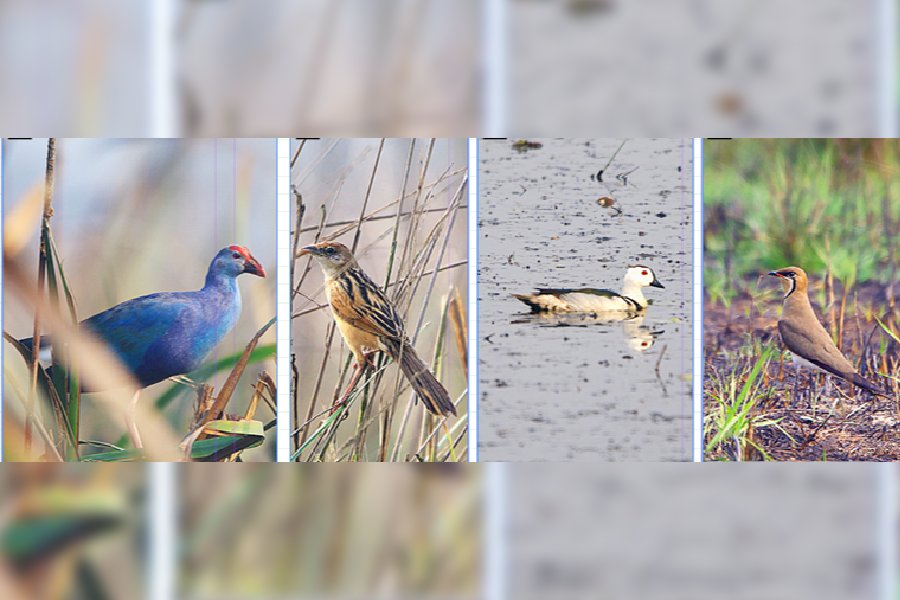The Poila Boishakh Bird Count, an annual exercise that started last year, will take place on Saturday and Sunday.
This is the only summer bird count exercise across Bengal.
Migratory birds that come to the state during winter to escape harsh conditions in their breeding places have left by now. A bird count in April, a birdwatcher said, will reveal the status of resident birds of Bengal.
As many as 387 avian species were recorded during last year’s Poila Boishakh Bird Count.
Bristled Grassbird, Grey-headed Swamphen, Cotton Pygmy-Goose, Oriental Pratincole, Plain Prinia, Tricoloured Munia and Yellow Bittern were some of the birds spotted during the count last year.
“Anyone who wants to participate in the bird count must have an e-Bird account. Download the mobile application and create an account. Participants need to observe birds for at least 15 minutes if they want their contribution to be counted,” said Sujan Chatterjee, secretary of the Birdwatchers Society, which is organising the bird count in collaboration with Bird Count
India.
The participants will log into their accounts and start the birdwatching activity. Entries will be made as they spot birds. One can take part in the exercise on Saturday or Sunday.
One of the most important sightings of last year’s Poila Boishakh Bird Count was Bristled Grassbird, said Chatterjee. “The bird has become rare nowadays,” he said.
Veteran birdwatcher Shubhankar Patra said Bristled Grassbird was commonly seen in the wetlands in Rajarhat, Nalban, Dankuni and Baruipur. But destruction of their habitat over the years has made its sighting rare.
The website of eBird, a platform created by the Cornell Lab of Ornithology of Cornell University in the US, says Bristled Grassbird “clambers around the dense tall grasses of lowland grasslands; favors areas with scattered shrubbery”.
The bird is “reclusive and will generally not flush twice in succession”, the website says.
Annual bird counts help bird watchers spot trends.
Any decline in population or destruction of habitatwill show up in such bird counts.
“After a few years or so, a trend will emerge. We willbe able to know whether climate change has had any impact on the avian species or population. The Poila Boishakh Bird Count happens during the breeding season. We will also get to know if any species is delaying its breeding,” said Mittal Gala, a project coordinator of Bird Count India.
She said one of the objectives of Bird Count India is to create “good quality birding data that is also accessible to the public”. Frequent bird counts will make the data more robust.
The inspiration for the bird count during Poila Boishakh came from the Great Backyard Bird Count, which is conducted in multiple countries in February. This count finds many migratory birds, almost all of which will have left by now.
Birdwatchers from multiple states thought about having separate bird counts in the states.
“There is Bihu Bird Count in Assam, Pongal Bird Count in Tamil Nadu and Onam Bird Count in Kerala,” said Gala. The state-specific bird counts are held around festivals.






